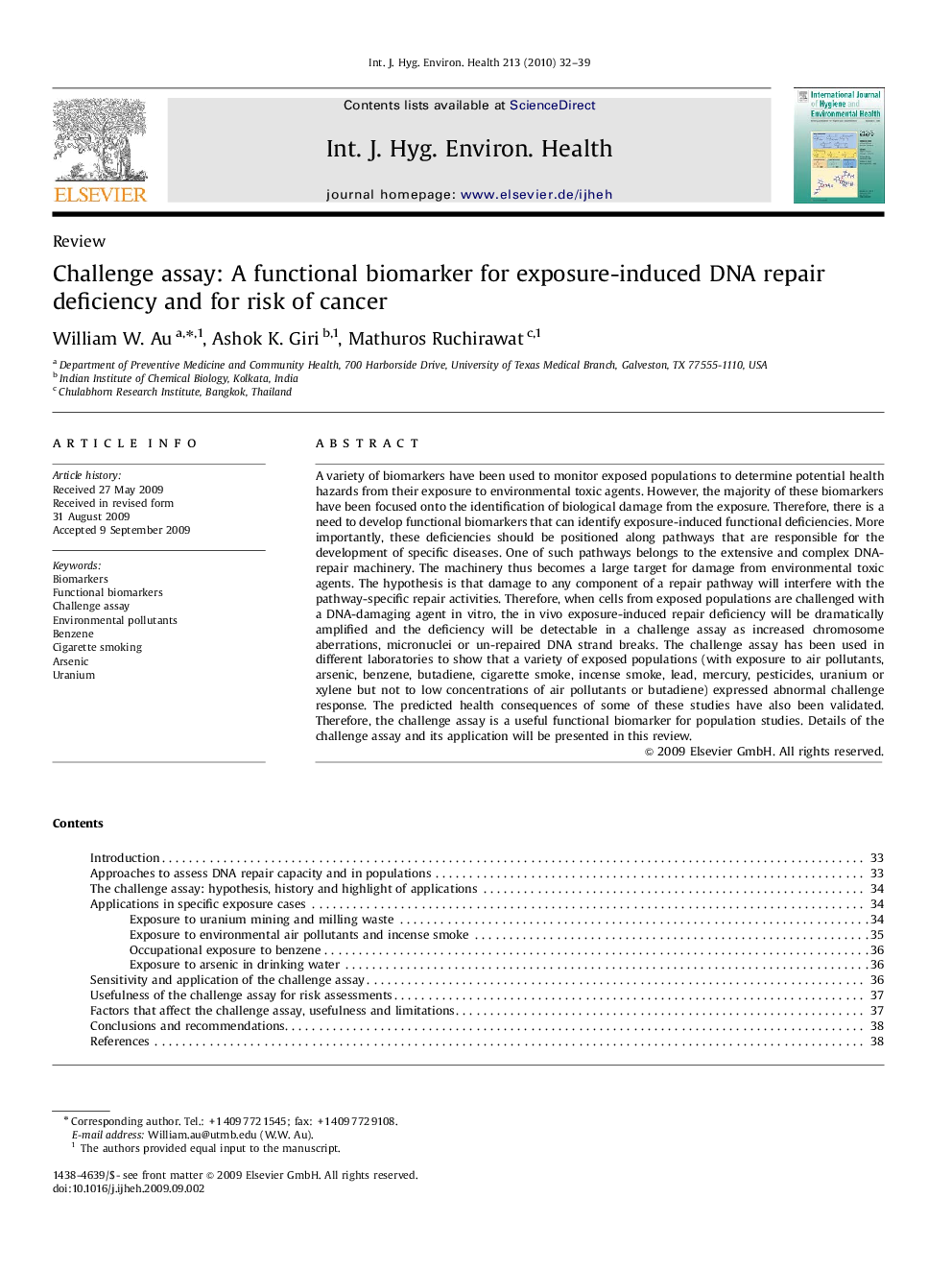| Article ID | Journal | Published Year | Pages | File Type |
|---|---|---|---|---|
| 2589074 | International Journal of Hygiene and Environmental Health | 2010 | 8 Pages |
A variety of biomarkers have been used to monitor exposed populations to determine potential health hazards from their exposure to environmental toxic agents. However, the majority of these biomarkers have been focused onto the identification of biological damage from the exposure. Therefore, there is a need to develop functional biomarkers that can identify exposure-induced functional deficiencies. More importantly, these deficiencies should be positioned along pathways that are responsible for the development of specific diseases. One of such pathways belongs to the extensive and complex DNA-repair machinery. The machinery thus becomes a large target for damage from environmental toxic agents. The hypothesis is that damage to any component of a repair pathway will interfere with the pathway-specific repair activities. Therefore, when cells from exposed populations are challenged with a DNA-damaging agent in vitro, the in vivo exposure-induced repair deficiency will be dramatically amplified and the deficiency will be detectable in a challenge assay as increased chromosome aberrations, micronuclei or un-repaired DNA strand breaks. The challenge assay has been used in different laboratories to show that a variety of exposed populations (with exposure to air pollutants, arsenic, benzene, butadiene, cigarette smoke, incense smoke, lead, mercury, pesticides, uranium or xylene but not to low concentrations of air pollutants or butadiene) expressed abnormal challenge response. The predicted health consequences of some of these studies have also been validated. Therefore, the challenge assay is a useful functional biomarker for population studies. Details of the challenge assay and its application will be presented in this review.
